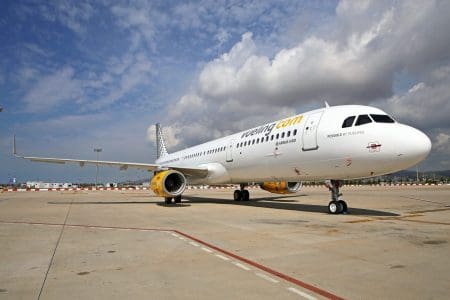It is a question that many people have asked this year – can I catch COVID on a plane? Many passengers are concerned about the risk of in-flight transmission of the COVID coronavirus. However, according to the International Air Transport Association (IATA), the chances of COVID airplane transmission is very low.
There have been 44 reported cases of in-flight transmission COVID, since the start of the year, says the IATA. This includes potential cases as well as confirmed cases. During this period 1.2 billion passengers have travelled by plane, which equates to one passenger contracting COVID-19 for every 27 million who fly, reports Travel Daily Media.
“We recognise that this may be an underestimate but even if 90% of the cases were un-reported, it would be one case for every 2.7 million travellers. We think these figures are extremely reassuring,” said Dr David Powell, IATA’s Medical Advisor. “Furthermore, the vast majority of published cases occurred before the wearing of face coverings inflight became widespread.”
Factors Mitigating COVID Flight Risk
A joint report by Boeing, Airbus and Embraer indicates that the airflow systems used in planes limits the COVID flight risk. Factors contributing to this include High Efficiency Particulate Air (HEPA) filters, the barrier created by the back of the seat, and the frequent rate that the air is exchanged.
In addition the now customary wearing of masks or face coverings while on board planes is deemed to be another factor in controlling the spread of the disease.
IATA’s research aligns with a recent study by Freedman and Wilder-Smith in the Journal of Travel Medicine, which also supports the theory that wearing masks reduces the risk of COVID airplane transmission.
IATA recommended passengers should wear masks in June, a measure that has now become compulsory on most airlines since the publication of the Takeoff Guidance by the International Civil Aviation Organization (ICAO).
As Likely as Being Struck by Lightning
“ICAO’s comprehensive guidance for safe air travel amid the COVID-19 crisis relies on multiple layers of protection, which involve the airports as well as the aircraft. Mask-wearing is one of the most visible,” said Dr Powell.
“But managed queuing, contactless processing, reduced movement in the cabin, and simplified on board services are among the multiple measures the aviation industry is taking to keep flying safe. And this is on top of the fact that airflow systems are designed to avoid the spread of disease with high airflow rates and air exchange rates, and highly effective filtration of any recycled air.”
A study by IATA study showed that some 86% of travellers believed measures introduced to prevent the spread of COVID-19 on planes were keeping them safe.
IATA’s Director General and CEO, Alexandre de Juniac, said, “There is no single silver-bullet measure that will enable us to live and travel safely in the age of COVID-19. But with just 44 published cases of potential inflight COVID-19 transmission among 1.2 billion travellers, the risk of contracting the virus on board appears to be in the same category as being struck by lightning.”
Can I Catch COVID on a Long Haul Flight?
However, many people are still concerned about the COVID flight risk, especially on long-haul flights.
The Centers for Disease Control and Prevention (CDC) have stated that 11,000 passengers potentially have been exposed to coronavirus on flights in the USA. It also has released reports highlighting the spread of the virus on two long haul flights, albeit both based in March before the wearing of masks was recommended.
According to de Juniac, the way to resolve current concerns is to implement “systematic COVID-19 testing of all travellers before departure. This will give governments the confidence to open their borders without complicated risk models that see constant changes in the rules imposed on travel.”
In the UK proposals to introduce Heathrow testing upon arrival are on hold as the government’s new travel taskforce considers possible ways of reducing the 14-day quarantine period upon arrival, including testing prior to departure.
“Testing all passengers will give people back their freedom to travel with confidence. And that will put millions of people back to work,” says de Juniac.



